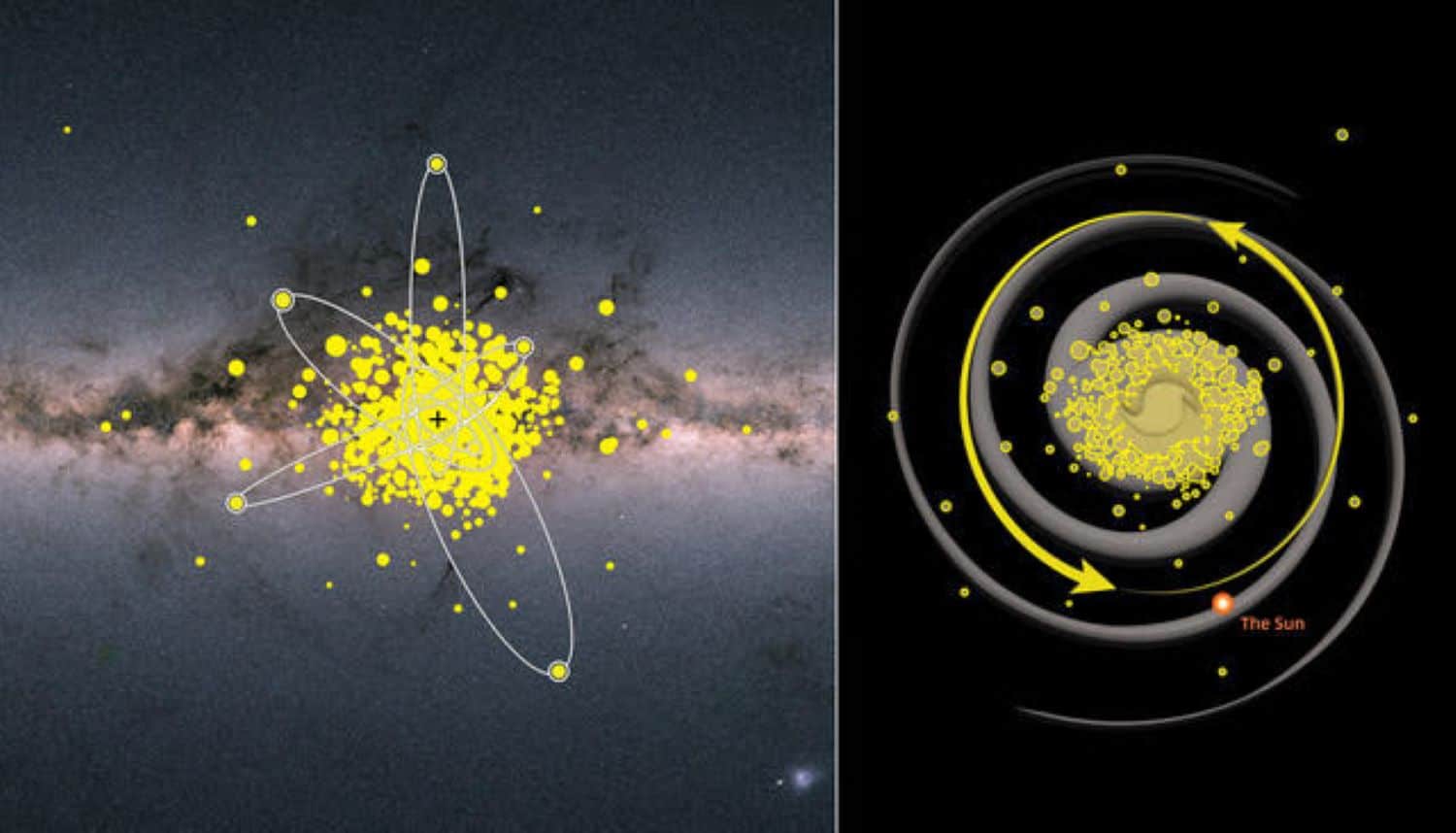
An international team of researchers has obtained the largest detailed observations of the oldest stars in the center of our Galaxy, the Milky Way. Despite being assumed to have formed chaotically, the Pristine Inner Galaxy Survey (PIGS) team discovers that this cluster of stars gently rotates around the Milky Way’s center. Furthermore, they appear to spend most of their lengthy lives close to the Galactic Center.
It is possible to investigate the characteristics of early galaxies by using stars created in the first billion years following the Big Bang and still exist today. Their pure chemical makeup, which consists primarily of hydrogen and helium with significantly less abundance of heavy components than younger stars like the Sun, makes them easy to identify. These old stars are often sought for by astronomers outside the Milky Way disc plane, in the low-density halo surrounding our Galaxy, where they are simpler to discover.
The oldest stars are predicted by galaxy formation theories to be found in the Milky Way’s dense interior. Locating them in this region is difficult because a dense layer of interstellar dust obstructs our view of the Galaxy’s center and because older stars are far more scarce than most of their younger counterparts.
Scientists successfully pre-selected candidate stars for the PIGS project using a specialized image filter on the Canada-France-Hawaii Telescope (CFHT). The biggest collection of in-depth observations for pristine inner Galaxy stars has now been made thanks to its confirmation by spectroscopic observations made with the Anglo-Australian Telescope (AAT).
The PIGS observations were merged with information from the Gaia space project to understand how these old stars migrate through the Milky Way. It turns out that older stars have more erratic motions, yet even the oldest stars discovered still exhibit some typical rotation about the galactic center. Additionally, they demonstrate that many of these stars live virtually their entire lives inside the inner Galaxy, within a sphere that barely extends halfway between the galactic center and the Sun.
PIGS team member Dr. Anke Arentsen from the University of Cambridge said, “It is exciting to think that we are seeing stars that formed in the earliest phases of the Milky Way, previously largely out of reach. These stars likely formed less than a billion years after the Big Bang, so are relics from the early Universe.”
“The available data for these ancient objects is growing rapidly. I’m excited to see what we will learn about these first stars to populate our Galaxy in the next few years!”
Detailed observations yet of ancient stars in the heart of the Milky Way
